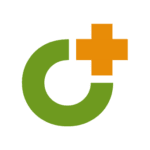Limitations of Homegrown Systems: Restricting Growth, Risking Safety in College Youth Programs
6 min read | Published February 16, 2024
Limitations of Homegrown Systems: Restricting Growth, Risking Safety in College Youth Programs
6 min read | Published February 16, 2024

By DocNetwork

By DocNetwork

By DocNetwork
Introduction
Leaders of youth programs on college and university campuses face the intricate task of managing program registrations, fees, and ensuring a secure and enriching experience for participants. Many institutions opt for ‘homegrown’ systems developed by in-house programmers to manage these aspects. While these systems offer initial cost advantages and customization, they often act as mere stopgaps, overshadowed by their long-term limitations. This expanded article examines these pitfalls, particularly emphasizing how they can hinder program growth and participant safety, a critical concern in today’s campus environments.

The Appeal of Homegrown Systems
Homegrown systems initially attract colleges due to the illusion of their cost-effectiveness, perceived customization, and in-house control. However, this convenience often masks the substantial challenges that emerge over time, particularly as programs scale, IT resources are steered elsewhere, and participant safety becomes a paramount concern.
The Shortcomings of Homegrown Systems
- Data Inconsistencies: They struggle with data integrity, leading to skewed program analytics and poor decision-making.
- Lack of Real-Time Updates: Essential in fast-paced campus environments, yet often absent in homegrown systems, causing delays and miscommunications.
- Scalability Challenges: Homegrown systems typically fail to scale with program growth because they’re built with ‘the urgency of now,’ not with an eye towards what programs might look like two years or five years from today. Then, when programs do grow, the systems subsequently become bottlenecks.
- Limited Integration with Other Platforms: These systems frequently fail to integrate seamlessly with other essential institutional platforms.
- Security and Compliance Risks: Often not in line with the latest security protocols, posing risks to participant data and the institution’s reputation.
- Resource-Intensive Maintenance: Require continuous updates and maintenance, diverting critical IT resources OR they’re not updated at all because the system’s creators are no longer with the university
- Inadequate Health and Safety Management: In an era where participant well-being is increasingly prioritized, these systems often lack the functionality to track health records, emergency contact information, and real-time updates on participants’ safety. This deficiency can lead to serious oversights in emergencies and a lack of preparedness in managing health-related incidents.

Impact on Program Growth and Participant Safety
The limitations of homegrown systems not only affect operational efficiency but also critically impact participant safety and program growth. Inadequate safety measures and inefficiencies can lead to a decline in program quality, participant satisfaction, and overall trust in the institution’s ability to provide a safe learning environment.
The Need for Comprehensive Program Management Solutions
Transitioning to a professional program management solution can address these challenges. Such systems are specifically designed for complex program management needs, offering:
- Robust data management and analytics
- Real-time information processing
- Scalability for growing program demands
- Comprehensive integration capabilities
- Advanced security and compliance features
- Efficient resource allocation
- Dedicated tools for managing participant health and safety, ensuring a proactive approach to emergencies and health management
Conclusion
While homegrown systems offer initial benefits, their long-term limitations, particularly in terms of participant safety and program scalability, necessitate a shift towards more comprehensive program management solutions. As leaders, prioritizing the growth and safety of your programs is crucial, and this often means moving beyond the confines of homegrown systems.
Let us show you why over
1,250 programs nationwide
choose CampDoc.
Schedule a Demo Today!


